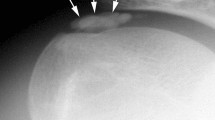Abstract
The involvement of the musculoskeletal system with other mild pleiotropic manifestations represents a clinical criterion, called “systemic features,” to d iagnose Marfan’s syndrome. We aimed to investigate the features of the hands and feet redressable contractures present in a group of Marfan patients. In 13 patients with previously diagnosed Marfan’s syndrome, an accurate clinical examination was performed. In particular the characterization of the musculoskeletal system by visual analogic scale to measure muscle pain (VAS) and muscle strength (MRC system) was carried out; the Beighton scale score was used to evaluate the articular hypermobility. Ultrasound examination (US) was performed to detect deep-superficial flexor tendons and extensor tendons of both hands, and the short and long flexor and extensor tendons of the fingers and toes in static and dynamic positions. The ImageJ program was adopted to measure a profile of tendon echo-intensity. A reduction of the thickness of all tendons was detected by US in our patients; the VAS and Beighton scale scores were in normal ranges. The profile of tendon echo-intensity showed different textural details in all Marfan patients. This study provides evidence for other contractures’ localization, and for altered findings of the tendons in patients with Marfan syndrome and finger/toe contractures. These changes may be associated with structural modifications in connective tissue.





Similar content being viewed by others
References
Fattori R, Nienaber CA, Descovich B, Ambrosetto P, Reggiani LB, Pepe G et al (1999) Importance of duralectasia in phenotypic assessment of Marfan’s syndrome. Lancet 11:910–913
De Cario R, Sticchi E, Giusti B, Abbate R, Gensini GF, Nistri S et al (2014) Bicuspid aortic valve syndrome and fibrillinopathies: potential impact on clinical approach. ICFJ 1:167–174
Loeys BL, Dietz HC, Braverman AC, Callewaert BL, De Backer J, Devereux RB et al (2010) The revised ghentnosology for the Marfan syndrome. J Med Genet 47:476–485
Voermans N, Timmermans J, van Alfen N, Pillen S, Op Den Akker J, Lammens M et al (2009) Neuromuscular features in Marfan syndrome. Clin Genet 76:25–37
Bertini E, Pepe G (2002) Collagen type VI and related disorders: Bethlemmyopathy and Ullrichscleroatonic muscular dystrophy. Eur J Paediatr Neurol 6(4):193–198
Pyeritz RE (2013) Marfan syndrome and related disorders. In: Rimoin D, Korf RP (eds) Emery and Rimoin’s principles and practice of medical genetics, Chapter 153, 6th edn. Academic Press, Oxford, pp 1–52
Tuncbilek E, Alanay Y (2006) Congenital contracturalarachnodactyly (Beals syndrome). Orphanet J Rare Dis 1:20
Buntinx IM, Willems PJ, Spitaels SE, Van Reempst PJ, De Paepe AM, Dumon JE (1991) Neonatal Marfan syndrome with congenital arachnodactyly, flexion contractures, and severe cardiac valve insufficiency. J Med Genet 28(4):267
Martinoli C, Bianchi S, Dahmane M, Pugliese F, Bianchi-Zamorani MP, Valle M (2002) Ultrasound oftendons and nerves. Eur Radiol 12:44–55
van Holsbeeck MT, Introcaso JH (1991) Sonography of Tendons. In: van Holsbeeck MT (ed) Musculoskeletal ultrasound, 2nd edn. Mosby, Chicago, pp 77–129
Pillen S, Verrips A, van Alfen N, Arts IMP, Sie LTL, Zwarts MJ (2007) Quantitative skeletal muscle ultrasound: diagnostic value in childhood neuromuscular disease. Neuromuscul Disord 17:509–516
Gokoglu F, Ceceli E, Ramadan SU, Yorgancioglu RZ, Kosar U (2008) Ultrasonographic evaluation of hand and foot tendons in Behcet’s disease. Arch Med Res 39:709–713
Walther M, Harms H, Krenn V, Radke S, Faehndrich TP, Gohlke F (2001) Correlation of power Doppler sonography with vascularity of the synovial tissue of the knee joint in patients with osteoarthritis and rheumatoid arthritis. Arthritis Rheum 44:331–338
D’Agostino MA, Said-Nahal R, Hacquard-Bouder C, Brasseur JL, Dougados M, Breban M (2003) Assessment of peripheral enthesitis in the spondylarthropathies by ultrasonography combined with power Doppler: a cross-sectional study. Arthritis Rheum 48:523–533
Kendall FP (2005) Muscle testing and function with posture and pain. Lippincott, Williams Wilkins, Baltimore, pp 283–305
Beighton P, DePaepe A, Hall JG, Hollister DW, Pope FM, Pyeritz RE et al (1992) Molecular nosology of Heritable disorders of connective tissue. Am J Med Genet 42:431–448
Aitken RCB (1969) A growing edge of measurement of feelings. Section of measurement in medicine. Proc Roy Soc Med 62:989–993
Melchiorre D, Linari S, Innocenti M, Bisoglio I, ToigoM Matucci-Cerinc M et al (2011) Ultrasound detects joint damage and bleeding in haemophilicarthropathy: a proposal of a score. Haemophilia 17:112–117
Pepe G, Giusti B, Attanasio M, Comeglio P, Porciani MC, Giurlani L et al (1997) A major involvement of the cardiovascular system in patients affected by Marfan syndrome: novel mutations in fibrillin 1 gene. J Mol Cell Cardiol 29:1877–1884
Langberg H (2013) Tendinopathy: more questions than answers. Br J Sports Med 47:i-e2. doi:10.1136/bjsports-2013-092459.18
Gibbon WW, Cooper JR, Radcliffe GS (2000) Distribution of sonographically detected tendon abnormalities in patients with a clinical diagnosis of chronic Achilles tendinosis. J Clin Ultrasound 28:61–66
Yousuf MA, Rakib MRH (2011) An effective image contrast enhancement method using global histogram equalization. J Sci Res 3:43–50
Attanasio M, Lapini I, Evangelisti L, Lucarini L, Giusti B, Porciani M et al (2008) FBN1 mutation screening of patients with Marfan syndrome and related disorders: detection of 46 novel FBN1 mutations. Clin Genet 74:39–46. doi:10.1111/j.1399-0004.2008.01007
Burks TN, Cohn RD (2011) Role of TGF-β signaling in inherited and acquired myopathies. Skelet Muscle 4:1–19. doi:10.1186/2044-5040-1-19
Lui TH (2012) Minimally invasive flexor hallucislongus transfer in management of acute achilles tendon rupture associated with tendinosis: a case report. Foot Ankle Spec 5:111–114
Posthumus M, Collins M, Cook J, Handley CJ, Ribbans WJ, Smith RK et al (2010) Components of the transforming growth factor-beta family and the pathogenesis of human Achilles tendon pathology—a genetic association study. Rheumatology 49:2090–2097
Acknowledgments
We would like to thank Dr. Maurizio Abbate for his cooperation regarding the program ImageJ management.
Author information
Authors and Affiliations
Corresponding author
Ethics declarations
Conflict of interest
The authors declare there are no conflicts of interest. No financial support or other benefits from commercial sources were received for the present work. None of the authors has financial interests which could create a potential conflict of interest or the appearance of a conflict of interest with regard to the work.
Statement of human and animal rights
All procedures performed in studies involving human participants were in accordance with the ethical standards of the institutional and/or national research committee and with the 1984 Helsinki Declaration and its later amendments or comparable ethical standard.
Informed consent
Informed consent was obtained from all individuals participants in the study.
Rights and permissions
About this article
Cite this article
Melchiorre, D., Pratelli, E., Torricelli, E. et al. A group of patients with Marfan’s syndrome, who have finger and toe contractures, displays tendons’ alterations upon an ultrasound examination: are these features common among classical Marfan patients?. Intern Emerg Med 11, 703–711 (2016). https://doi.org/10.1007/s11739-016-1399-5
Received:
Accepted:
Published:
Issue Date:
DOI: https://doi.org/10.1007/s11739-016-1399-5




